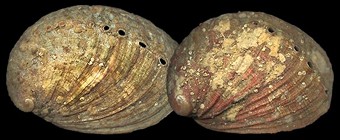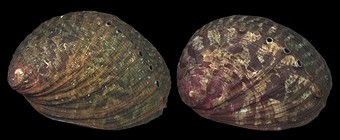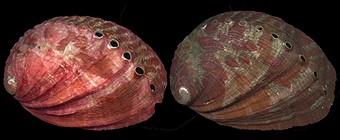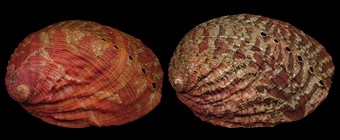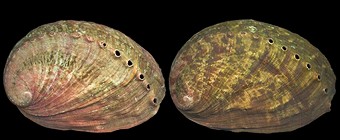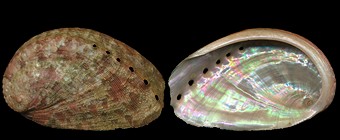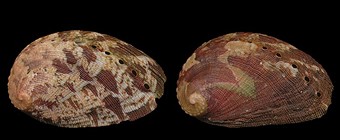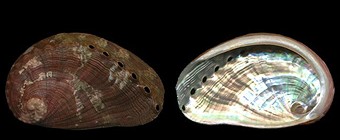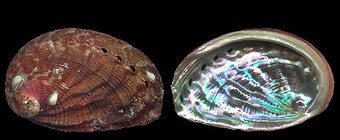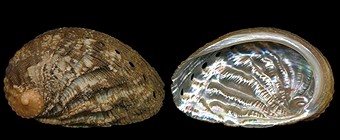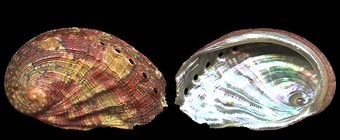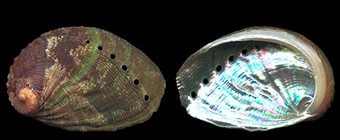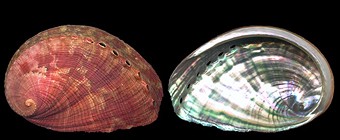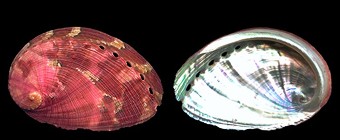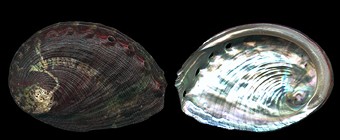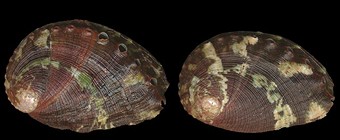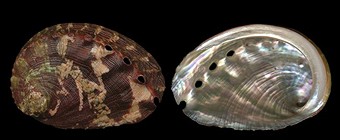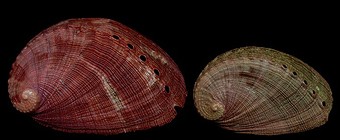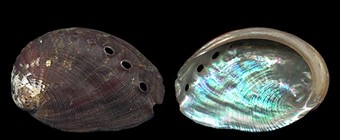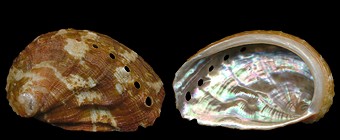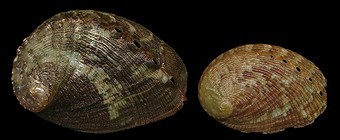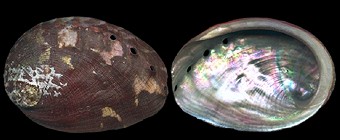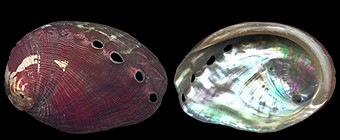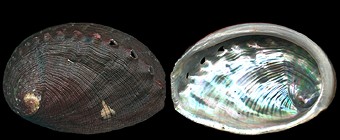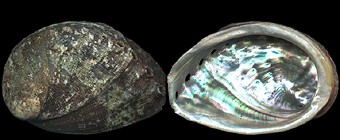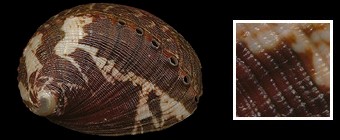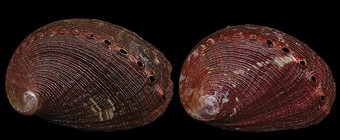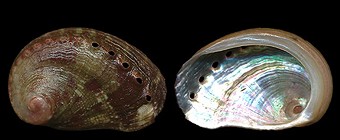
Between Casablanca and Tarfaya, the coast lodges two different groups of haliotids.

The first group is undoubtedly
H. tuberculata, in its Moroccan variant: medium-sized to large, flat, with few sculpture. It is a kind of transitional population that evolves from the dwarf and slender mediterranean form up to the large rounded brittanic shells.

The second group is remarkably constant in shape, pattern, colour, and sizes; rounded, small to medium-sized, chestnut brown, rarely red, marbled, this form never varies between Casablanca and at least Petite Côte, in Sénégal.

This second group matches the succinct but useful description of
marmorata given by Linnæus: circular and not oval, with spiral striations and very weak transversal lines. The fact that the group does not vary and is present,
unchanged, in the region where
tuberculata continues to change in many ways but never in direction of the
marmorata design, is, in my opinion, a serious presumption in favour of the validity of this taxon. More:
 H. tuberculata
H. tuberculata lives in many different biotopes: cold in the north, among long algae that give the submarine landscapes a light of cathedral, of a forest; in crevices in lower intertidal, offshore on remote reefs exposed to waves, in places where the dominant species is the barnacle;
in deep water, where green algae let the place to other vegetables; in shallow water, among the micro-algae that live under the violent sun of Alboran Sea; in the hot and turbid waters of the gulf of Kissamos, in western Crete; along a coast that is a frontier between a relatively cool ocean and one of the major deserts of the planet, the western limit of Sahara...
Each time
tuberculata encounters new conditions, it changes: of size, of weight, of colours. Even in a same place, it is able to develop many different variations in pattern and sculpture, according to the depths it lives, to the algae it meets etc.

Beside that, the second group varies very few along the Sahel-Sahara area, at the same places where
tuberculata is changing; the only variations relate to the color, that can jump from the traditional brown to a deep red, and the more or less density of the cream blotches
that give to the shells their marbled aspect. These two different behaviours are a first beam of indices in favour of the existence of two species. Second beam: in places where the ranges of the two groups overlap, intergrades seem not to exist.
I never succeeded in finding, ordering, buying or looking on the Net specimens showing a transition from one group to an other.

Shells from the area between
W. Africa and Biafra Bight show a change, wich should be related to the
change in the coastal vegetation: once the Sénégal river
is passed, one quits the deserts and enters in the green Africa; these
variations command the repartion of the vegetal underwater species, the
algae the abalone feed on, and so, the design of the shell.

HOLES IN THE MAP:

First, it could be interesting
to study some good batches of
H. tuberculata fished between W.
Algeria & N. Morocco. Just for fun, in order to discover how the dwarf
mediterranean abalones transform themselves into these smooth and medium-sized
moroccan shells. Second: samplings in the area between Western sahara
and Almadies might answer to this new and crucial question: how are the
intergrades of
tuberculata between Morocco and Dakar area? Does
this species vanish, or does it survive after Almadies?

Pictures of living animals
might not be too difficult to obtain, as the two species live aside along
the whole saharian coast. Then, a series of specimens collected between
Sénégal and Gabon would be the welcome, this is obvious...
And, yes, shells from São Tomé & Principe are so different
from those from Ghana that one dreams after a large batch of abalones
coming from the ridge Bioko-Annobón... And what about this P.A.
Bernard's
tuberculata from Cape Esterias, pictured in his Shells
of Gabon, 1984?... One has never finished.

"One has never finished". In fact, it is this kind of considerable truths that makes life so interesting: there is always something undiscovered. So, the sentence that opens this directory, on
index page, is not completely exact:
Felix qui potuit rerum cognoscere causas etc...
It remains a place for something different. Virgil attests it in the continuation. Here is the full passage:
 FELIX QVI POTVIT RERVM COGNOSCERE CAVSAS
FELIX QVI POTVIT RERVM COGNOSCERE CAVSAS
 ATQVE METVS OMNIS ET INEXORABILE FATVM
ATQVE METVS OMNIS ET INEXORABILE FATVM
 SVBIECIT PEDIBVS STREPITVMQVE ACHERVNTIS AVARI
SVBIECIT PEDIBVS STREPITVMQVE ACHERVNTIS AVARI

(sed?...)
 FORTVNATVS EST ILLE DEOS QUI NOVIT AGRESTIS
FORTVNATVS EST ILLE DEOS QUI NOVIT AGRESTIS
 PANAQVE SILVANVMQVE SENEM NYMPHASQVE SORORES
PANAQVE SILVANVMQVE SENEM NYMPHASQVE SORORES
 ...ille
...ille versus
qui. Subtle Virgil... I suspect Pan and Sylvan (
to say nothing of these girls –the nymphæ–) to live, like ormers, in the crevices of the knowledge, in places where intuition and amazement are honoured. It is the first cause of all these pages. Thanks, everyone!
But... special thanks to Charlie Sturm and Chris Vos, who gave me precious informations; to John Wolff and Peter Ryall, for the shells they provided. Franck Frydman, many thanks for this picture of a
lamellose abalone from W. Brittany. This ConchList is a mine!
